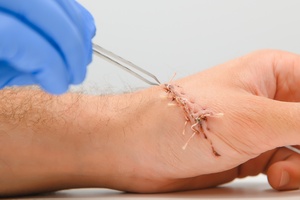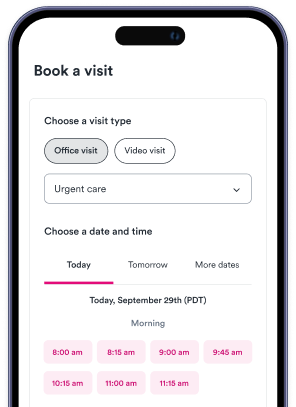Key points
- Waist pain can be caused by a variety of issues, from muscle strain to serious underlying health conditions, and treatment varies accordingly.
- Risk factors for waist pain include age, weight, poor core strength, overall health, occupation, hobbies, and previous injuries.
- Diagnosis of waist pain may involve X-rays, ultrasounds, CT scans, MRIs, blood tests, bone scans, and electromyography.
- Prevention and relief strategies include regular exercise, maintaining a healthy weight, avoiding smoking, practicing good posture, and seeking medical treatment if pain persists or is severe.

Pain around the waist can be both annoying and confusing, as it might stem from a variety of causes. Sometimes, it could be just a simple muscle strain from overexertion, while other times, it might be linked to a more serious underlying issue. The National Institute of Health (NIH) explains that depending on what’s causing the pain, you might find relief by taking some time to rest, using medications to manage the discomfort or even considering surgery if the problem is more complex. Read on to explore the different reasons behind waist pain and offer insights into various treatment options that can help you feel better.
What causes pain in the waist?
Pain in the waist area can be confusing since so many different issues might be behind the discomfort. It isn’t always easy to tell what’s causing the pain, whether it’s a simple strain or something related to the spine or internal organs. Knowing the possible reasons can help you figure out the best way to get relief. Some of the most common causes of pain around the waist, according to the NIH, include:
- Muscle or Ligament Strain: Overworking or injuring the muscles and ligaments in the waist can lead to soreness and stiffness.
- Bulging or Ruptured Disks: Disks in your spine can sometimes bulge or rupture, which may press on nerves and create pain around your waist.
- Arthritis: Inflammation from arthritis in the joints of the spine or nearby areas can cause persistent discomfort.
- Osteoporosis: This condition weakens bones, making them more prone to fractures or collapse, which can result in pain.
- Obstructions in Your Urinary System: Blockages or infections in the kidneys or bladder can cause pain that radiates to the waist.
- Kidney Stones: Hard deposits that form in the kidneys can create sharp, intense pain that might be felt in the waist area.
- Appendicitis: Inflammation of the appendix, which can cause pain around the belly button that moves to the right side of the abdomen and waist.
Risk factors for pain around the waist
When it comes to pain around the waist, several risk factors can make you more likely to experience discomfort. These factors might not cause pain on their own, but they can increase your chances if other issues arise. Understanding these risks can help you take steps to prevent pain or manage it more effectively. Here are some common risk factors, according to the NIH:
- Age: As you get older, your body naturally undergoes changes that can weaken muscles and bones, making pain more likely.
- Weight: Carrying extra weight puts added pressure on your spine and waist, which can lead to strain and discomfort.
- Poor Core Strength: A weak core means your back and waist have less support, increasing the risk of injury and pain.
- Overall Health: Conditions like diabetes or heart disease can affect circulation and healing, making you more prone to pain.
- Occupation and Hobbies: Jobs or activities that involve heavy lifting, long hours of sitting or repetitive motions can stress the waist and lead to pain.
- Previous Injuries: Past injuries to your back or waist can make that area more vulnerable to future pain.
Diagnosis and tests for waist back pain
When you're dealing with pain around the waist, your doctor might use a few tests to figure out what's causing the discomfort. These tests can help look at your bones, muscles and other tissues in detail. By understanding the exact problem, you can get the right treatment more quickly. Here are some common tests used for diagnosing waist and back pain, as outlined by the NIH:
- X-rays: These create clear images of your bones to help spot fractures or changes in the spine's structure.
- Ultrasounds: This test uses sound waves to produce images of soft tissues, showing issues with muscles, tendons or organs.
- CT Scans: CT scans give detailed cross-sectional images of your waist, which can reveal hidden injuries or abnormalities.
- MRIs: MRI scans use magnets and radio waves to produce clear pictures of both bones and soft tissues, making it easier to spot problems.
- Blood Tests: These tests check for signs of infection, inflammation or other underlying conditions that might cause pain.
- Bone Scans: Bone scans highlight areas of high activity in your bones, which can indicate stress fractures or other bone-related issues.
- Electromyography (EMG): This test measures the electrical activity in your muscles and nerves to help identify any nerve damage or dysfunction.
Six ways to prevent pain around the waist
Preventing pain around the waist starts with making smart choices in your everyday routine, according to the NIH. By staying active, taking care of your body and using proper techniques during physical activities, you can reduce your risk of injury and discomfort. Some practical ways to help keep waist pain at bay include:
- Exercise Regularly: Keeping your body active through cardio, stretching and light workouts can strengthen your muscles and improve flexibility.
- Build Muscle Strength: Focusing on core exercises not only strengthens your abdominal muscles but also supports your back, reducing strain on your waist.
- Keep a Healthy Weight: Maintaining a balanced weight minimizes extra pressure on your spine and waist, lessening the chances of pain.
- Avoid Smoking: Smoking can restrict blood flow and slow healing, making your muscles and tissues more prone to injury.
- Move Smart: Using proper lifting techniques, taking breaks to stretch and avoiding repetitive strain can all help prevent pain in your waist.
- Practice Good Posture: Sitting and standing with proper alignment supports your spine and helps reduce unnecessary stress on your waist.
How to relieve lower back pain around the waist
Relieving lower back pain around the waist can involve different methods depending on the severity of the pain and its underlying cause. Sometimes, simple changes to your daily routine can make a big difference, while in other cases, more advanced treatments might be needed. The sections below break down several approaches from the NIH that can help ease your discomfort:
Self Care
Making small adjustments at home—like using heat or cold packs, doing gentle stretches and taking it easy—can often help reduce pain and improve movement.
Medical Treatment
Your doctor may recommend medications such as pain relievers or muscle relaxants, or even physical therapy to help manage the pain and support healing.
Surgery
For cases where other treatments aren’t effective, surgery might be an option to correct the underlying issue causing the pain.
Alternative Therapies
Other methods like acupuncture, massage or chiropractic care can also offer relief by helping to ease muscle tension and improve overall function.
When to see a doctor for pain around the waist
Pain around the waist can often improve on its own with a bit of self-care, like rest or gentle stretching. However, if your discomfort continues or comes with other concerning symptoms, it’s important to see a doctor. Being proactive about your health can help catch any serious issues early. Here are some signs that you should get medical help:
- Pain Lasting Longer Than a Few Weeks: If your discomfort doesn’t improve after several weeks, it might be more than just a temporary strain.
- Severe Pain That Doesn’t Improve With Rest: Intense pain that continues even when you’re taking it easy can be a sign of something that needs professional care.
- Weakness, Numbness or Tingling in the Legs: These symptoms might indicate nerve involvement or other serious issues that need to be checked out.
- Unexplained Weight Loss: Losing weight without trying, along with waist pain, can be a sign of an underlying condition that requires attention.
- Pain Worse at Night: If you cannot sleep because of the pain, seek help promptly.
Urgent care near me
Use Solv to find urgent care near you for waist and back pain treatment.
FAQs
What are some common causes of pain around the waist?
Pain around the waist can be caused by a variety of factors. Some of the most common causes include muscle or ligament strain, bulging or ruptured disks in the spine, arthritis, osteoporosis, obstructions in the urinary system, kidney stones, and appendicitis.
What are some risk factors that can increase the likelihood of experiencing waist pain?
Several risk factors can make you more likely to experience discomfort around the waist. These include age, weight, poor core strength, overall health conditions like diabetes or heart disease, occupations or hobbies that involve heavy lifting or long hours of sitting, and previous injuries to the back or waist.
How is waist pain diagnosed?
Doctors use a variety of tests to diagnose waist pain. These can include X-rays, ultrasounds, CT scans, MRIs, blood tests, bone scans, and electromyography (EMG), which measures the electrical activity in your muscles and nerves.
What are some ways to prevent waist pain?
Preventing waist pain can involve making smart lifestyle choices. Regular exercise, building muscle strength, maintaining a healthy weight, avoiding smoking, moving smartly to avoid strain, and practicing good posture can all help reduce the risk of waist pain.
When should I see a doctor for waist pain?
If your waist pain lasts longer than a few weeks, is severe and doesn't improve with rest, or is accompanied by weakness, numbness, or tingling in the legs or unexplained weight loss, it's important to see a doctor. These could be signs of a more serious underlying condition that requires professional care.









